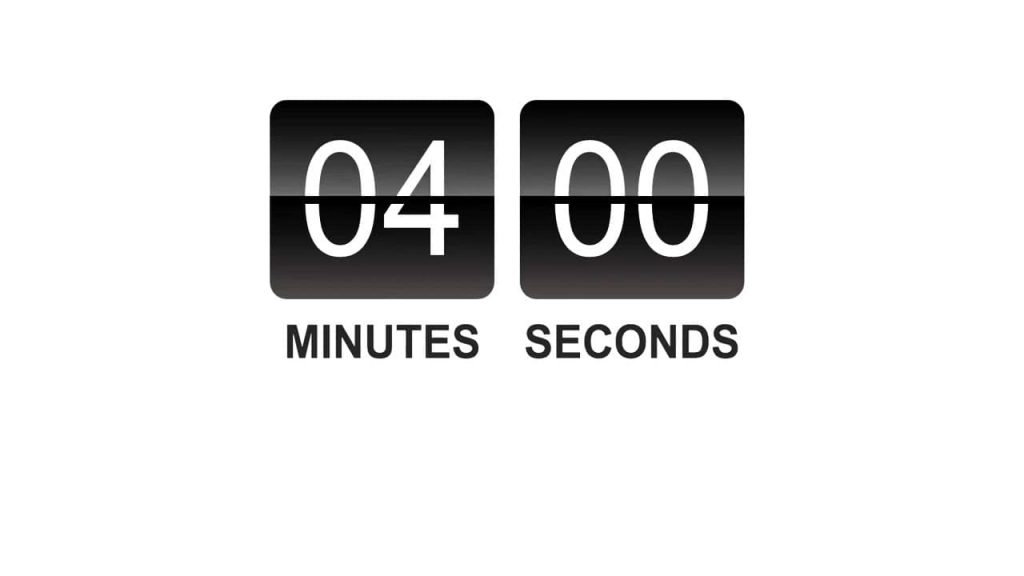WEBINAR WITH YETUNDE SHORTERS: THE P.O.W.E.R OF PURPOSEFUL PERSONAL BRANDING (JULY 19)
What comes to mind when you hear the term ‘personal branding’? A perception of oneself? A unique identity? No matter the thought, your personal brand reflects your reputation, your legacy, the people you surround yourself with, your authenticity…the list is endless! Having a well-defined personal brand requires you to be proactive about how you manage it. This starts with thinking about what you want to be known for and then taking purposeful action to ensure that’s the image you’re creating. So, what does it mean to have a ‘purposeful personal brand’? How can it earn you top dollar without blowing lots of schmoney on stuff that won’t even do justice to your brand? Join Yetunde Shorters, on Thursday, 19th July, as she shares secrets that will earn you multi-six figures without spending a dime on advertising or marketing through purposeful personal branding. Yetunde Shorters helps the inspired go-getter create an authentic, purposeful and fun personal brand that helps you do what you love while helping others, in a way that creates financial freedom for you and your family. [bctt tweet=”Discover the #power of purposeful personal branding with @Yetunde on July 19th at 12PM EST! Register here: bit.ly/yetundes” username=”SheLeadsAfrica”] Some of the topics we’ll cover Identifying where your purpose comes from and get clear on it Ways to elevate your personal brand How to develop a brand statement that represents you best Secrets that will earn you multi-six figures without spending a dime on advertising or marketing Register below to get access to this opportunity and submit questions you would like Yetunde to answer. Webinar details: Date: Thursday, July 19th, 2018 Time: 12PM Miami // 5PM Lagos // 6PM Johannesburg Watch Part 1 below: Watch Part 2 below: About Yetunde Yetunde Shorters is an international publicist and an industry leader in helping women entrepreneurs discover their purpose and provide value to the right people to make profits. She is also the creator of ICY PR, the Afropolitan Chef and Founder of ICY ACADEMY and a 4-time Amazon best-selling author. With over 15 years of experience working and securing publicity for multiple Grammy Award Winning Artists, International Celebrities and Entrepreneurs, Yetunde has been featured in Elle, CBS, Zen Magazine, Tropics and more. She is masterful at connecting her client’s sense of purpose to prosperity. She also uses her skills to help emerging entrepreneurs create value, save time and increase productivity. In partnership with She Leads Africa, Yetunde is launching A Purpose Breakthrough 101 session, a 90 minutes intensive brand clarity session, where she delves deep into your purpose to connect it to profits. She also runs the ICY ACADEMY PERSONAL BRANDING MASTERCLASS, where you learn strategies that get results, techniques that save you time and access to a powerful network of go-getters who provide the support you need to thrive in your purpose.
Public Relations vs. Advertising

[bctt tweet=”In PR, The “public” is anyone who ever has/will form an opinion about the client” username=”SheLeadsAfrica”] What is Public Relations? Public Relations is a strategic communication process that builds and manages mutually beneficial relationships between Organizations and the Public. The “public” is anyone who ever has or ever will form an opinion about the client. These could include clients, potential clients, members of the community, the media, online fans etc. Public relations success requires a deep understanding of the interests and concerns of each of these and how to effectively address them through Publicity. What is advertising? Advertising is the act of announcing, praising or drawing attention to a product, service or event in a public medium in order to promote sales or attendance. What are the similarities between Public Relations and Advertising? PR agencies and advertising agencies share the same goals: promoting clients and making them seem as successful, honest, important, exciting or relevant as possible. But the paths to achieving this are different. [bctt tweet=”PR & advertising agencies share the same goals but different paths to achieving them” username=”SheLeadsAfrica”] How is Public Relations different from Advertising? Newspapers, radio and TV stations (especially local ones) are always looking for fresh story ideas, particularly those with a “human interest” angle. A PR professional crafts press releases resembling a compelling news story, making it clear why his client’s product, service or personal history is important. The goal is to fulfill the journalist’s requirement for news while enhancing the client’s image in the public eye. PR agencies, as opposed to advertising agencies, promote companies or individuals via editorial coverage. This is known as “earned” or “free” media stories appearing on websites, newspapers, magazines and TV programs as compared to “paid media” or advertisements. Since advertising is paid for by the client, it is thus viewed with skepticism. Articles or TV appearances in respected publications have the advantage of third-party validation and are generally viewed more favourably. Another huge difference is the price. Public Relations in the media is free if done directly by the company. PR firms also charge monthly retainers or can be hired for specific projects. Advertising can be very pricey when you figure the cost of the space or time plus the creative designs and production costs. And most advertisements need to be repeated several times before the consumer can be influenced. Publicity has greater longevity than advertising. An article about your business will be remembered far longer than an advert. Publicity also reaches a far wider audience than advertising generally does. Sometimes, your story might even be picked up by the national media, spreading the word about your business all over the country. [bctt tweet=”An article about your business will be remembered far longer than an advert” username=”SheLeadsAfrica”] Advantages of Public Relations over Advertising Advertising builds exposure whilst Public Relations build trust. Advertising leaves a sceptical audience whilst public relations because of its endorsement by the media, validates and legitimises the audience. Because it’s in their best interest to sell you more ads, advertisers tell clients what they want to hear whilst PR people who deal with crises, image enhancement and creation of long-term relationships, where your story often must be accepted by others (the media) before you obtain recognition, will tell you what you need to hear. Advantages of Advertising over Public Relations Advertisers maintain creative control of output whilst Public Relations has no final say in output which rests in the hands of the media. Advertising uses visuals whilst Public Relations use language for persuasion. With Advertising, you are guaranteed of a placement in the media platform but with Public
How to use media platforms to grow your business

[bctt tweet=”Build your public presence and reach new customers with these tips” username=”SheLeadsAfrica”] Public relations can be used to protect, enhance or build reputations through the media. The world of business is characterised by fierce competition. In order to win new customers and retain the existing ones, companies not only have to distinguish themselves from the competition but must also create and maintain a positive public image which helps create a strong relationship with the customers and in turn increases the sales. How to build your public presence All you have to do is let others know you exist and that you are an expert source of information or advice about your industry. Being regarded as an industry expert can do wonders for your business. These six steps will be useful; Start by making sure you know everything you can about your business, product, and industry. Talk to as many groups as possible such as with public speaking engagements. Do it free of charge, of course, and keep it fun, interesting and timely. Contact industry trade publications and volunteer to write articles, columns or opinion pieces. Offer seminars or demonstrations related to your business. For example, a travel agency may recommend the best and safest destinations for the Christmas holidays. Host or appear as a regular guest or contributor to a local radio or TV talk show. Capitalise in well-run platforms such as Facebook, Twitter, and Instagram where you can post about your current specials, discounts and new products around the clock. Preparing media or press kits Effective publicists have great relationships with many different journalists in many different industries. Keep ready-made kits at hand for the media. Your kit could include executive profiles, quick facts about your organization, such as its company history, photographs, detailed product descriptions; even samples and business cards. How to prepare a pitch to the media for publication If you’d like media platforms to cover the work the work you do, you’ll need to first pitch to the media. These steps should come in handy. Write your positioning statement. This sums up in a few sentences what makes your business different from the competition and what your Unique selling point (USP) is. List your objectives. What do you hope to achieve for your company through the publicity plan you put into action? List your top five goals in order of priority and be specific and set timelines. Identify your target customers. Are they male or female? What age range? What are their lifestyles, incomes and buying habits? Where do they live? Identify your target media. List the newspapers and TV and radio programs in your area that would be appropriate outlets. Make a complete list of the media you want to target, then call them and ask whom you should contact regarding your area of business. Develop story angles. Keeping in mind the media you’re approaching, make a list of story ideas you can pitch to them. Develop story angles you would want to read about or see on TV. Brainstorm ideas for example, if you own a clothing store, one angle could be to donate clothes to the local women’s shelter. Make the pitch. Put your thoughts on paper, and send them to the reporter in a “pitch letter.” Make the letter short and include your contact details so the reporter can contact you. Following up is the key to securing coverage. Wait a few days then follow up your pitch letter with a telephone call. Always be courteous when speaking to journalists bearing in mind that they are busy individuals. Send a thank you note to the reporter after the publication of your story.
The 4 minute guide to SME marketing: Much ado about big budget

“Jennifer our business only has #xxxx and I can show you our account statement if you don’t believe me. I really would love to do marketing o, but If I spend that kind of money now, I would have nothing left to run my business.” This was a real statement from a friend of mine during a conversation we had about his recently launched platform. At some point during the conversation, I had to subtly remind him that if he does not market his platform, he wouldn’t have a business to run in another few months. I cannot say this enough, when it comes to getting your business out there, marketing is a big deal. As you think of your product you also have to think about how you will go to market with that product. Having worked with/and for startups and small businesses, I am all too familiar with the budget constraints. There is usually too little cash competing with too many business priorities. This, coupled with the fact that for a long time small business owners have been told that marketing (and subsequently advertising) is for the big players with big budgets, have made them shy away from it until it becomes an absolute necessity. The real questions are: Can you create buzz around your product or service without a killer budget? Yes! Can you get people to care about your brand and actually want to engage with your brand without having to dole out a shit load of money? A big yes! These things are very possible as long as you are committed to going through the marketing process in a creative and deliberate way. As we go further in this series, we will explore multiple strategies and tactics that you as a small business owner can deploy in growing your customer or client base. However, today, I would like to speak to 2 things that I consider very essential at the early/launch stage of your business that will cost you little or nothing to implement: Be approachable One of my favorite IG luxury fashion retailers once did a PSA that encouraged people to come into her store and window shop even though they might not be able to buy any of the items at that particular time. I thought that was really warm and inviting and it inspired my first interaction with her business. Truth is, your brand essence notwithstanding, if your business projects an image of being aloof or arrogant, people will probably have a difficult time connecting and interacting with it. Give something back Earlier this year I bought a pair of shoes from one of these online stores and inside the box was a voucher with a discount code for 20% off my next purchase. This was to thank me for choosing them and to encourage me to choose them again. I was quite pleased with both my purchase and the incentive and let’s just say before the end of the day I had redeemed my voucher. Make people feel appreciated for spending money on your business and you give them a powerful reason to want to spend more. More often than not superior marketing can beat a superior product. Coca Cola and Pepsi are fantastic in illustrating this because despite the fact that Pepsi typically wins in blind taste tests, Coca Cola still controls a huge chunk of the carbonated soft drinks market. However, superior marketing does not always imply superior marketing spend/budget. With a healthy dose of creativity, strategic marketing and sometimes just plain hustle you, with your little or no marketing budget, can achieve results that would rival that of an FMCG with their seeming infinite marketing spend.
Debunking the “Marketing is Advertising” myth

Advertising is not marketing. As a marketing professional I encounter clients who usually do not understand that although all advertising is marketing, not all marketing is advertising. Marketing is an all-encompassing practice, made up of various elements such as strategy, customer research, trend investigation, public relations, social media promotion, product design, pricing techniques, promotional campaign activities, distribution management, competitor research, innovation, concept and service design, content creation, copywriting, and so much more. All of these efforts need to be working together to build a successful product or service. Advertising on the other hand is really only one form of marketing but that which everyone actively notices. It is the promoting of brand awareness to a large target audience via mass media, such as television, print and radio. Let me try to simplify this Think of marketing as a box of crayons with different colors, while advertising is just one color in the entire box. To create a masterpiece that isn’t lackluster, you need to play around with the different colors in your box of crayon. I thought it was important to establish this because I encounter quite a lot of entrepreneurs and business owners who think that because they have a Facebook or IG page, they are ‘marketing’. While social media is a fantastic marketing tool, it is but one in the arsenal of tools that are available to you. Nonetheless, advertising works The big brands have proven this over and over again. They have also proven the fact that advertising needs the support of other marketing elements to deliver good results. So while you would be serenade by Power Oil sachet jingles on radio on your way to and from work (Advertising), you would also find that Power Oil sachet at almost every street corner (Optimized Distribution). More importantly, advertising alone would not solve all of your marketing problems. So for example, you can choose to invest your limited funds in a radio campaign or on Facebook sponsored posts but all of these efforts would yield little or no results if you do not have a product that solves a real consumer need. However, the process to dimensioning & understanding these needs is a marketing process called customer and market research (and definitely not advertising)! Another example is the lady who sells packaged food items (Say 5kg at ₦8000) and wants to increase her sales. She might not necessarily need to spend money trying to set up a billboard along the third mainland bridge. What she could do is launch smaller variations of her product (let’s say 2kg @₦4000) that students and other low income earners can afford. This would help her appeal to more people and broaden her market space. Am I making sense? The lesson today is single minded: Marketing is much bigger than advertising. And to be very honest, marketing is a tough concept to get your arms around but that is why I am here. To help you get the hang of it such that you would get actual returns on all investments (time, money and effort) made into this very vital aspect of your business.
The 4 minute guide to SME marketing

The average human’s attention span is… oh look, a notification on my cell phone! According to scientists, the age of smartphones has left humans with such a short attention span even a goldfish can hold a thought for longer. As such it is no longer surprising when people complain that a 1000 or 2000 words post/article is toooooooooo long. So I asked a couple of friends and acquaintances; “What’s the most amount of time you would be willing to spend to carefully read an article that piques your interest?” The answers varied between 2-7 minutes and at the end of the day I arrived at an average of well, 5 minutes! And this was one of the considerations that inspired “The 4 Minute Guide to SME Marketing” series. What I hope to do with this series is help start-ups and small/medium business owners navigate the rather murky waters of marketing. Because I understand the time constraints we all face as busy professionals and business owners, I plan to keep every article interesting, informative, and most importantly, concise. Pinky swear! I chose to do a series specifically on marketing because, to be honest, I absolutely love the profession and practice. I always tell people that marketing found me (a story for another day). After spending years in the advertising industry as a brand and marketing strategist and working on a number of brands across different industries, I’ve gained insights that I believe would be useful to small business owners. It can be difficult to access ready and affordable marketing consulting services so That said, I guess we can all agree that starting a business is exhilarating. Unfortunately, the “build it and they will come” theory doesn’t hold much weight anymore because while you might have a fantastic, the greatest thing since sliced-bread product, if people do not know about it, who you epp? The process of letting people know about your product or service is a deliberate one hence an entire academic and professional field called marketing. Again, unfortunately, a lot of startups and SMEs have a flawed mindset with respect to marketing (what it entails and what it can do for their businesses) and this is why most of them do not scale or eventually live up to their full potentials. I mean in today’s business field, battles are won or lost in the market arena and a good product/service alone would not sell itself. As such, marketing imperatives are no longer an option, but a MUST! You can choose to think about it this way. Your product or service started as an idea and we all know that ideas need momentum. LaunchSquad’s Jason Throckmorton said “you can have the best idea in the world but if you don’t couple that with a strategy to spread your story, your idea isn’t going to go very far.” I couldn’t agree more. Still in doubt? You can also choose to think about it this other way. As a start-up, as a new business, nobody knows you yet so you need to get people to care enough to try what you offer. And this is when marketing becomes a smart investment because it can help you legitimize your business, create excitement, engage potential clients/customers, encourage trials and repeat purchases and even inspire loyalty and advocacy. You see where I am going with this right? 😀 I’d conclude today’s post by saying SME marketing shouldn’t be a flimsy afterthought. Just as you have been very deliberate about creating a top notch product or service, you need to be equally deliberate in creating demand for that product or service. Until next week SLAyers! Cheers!
